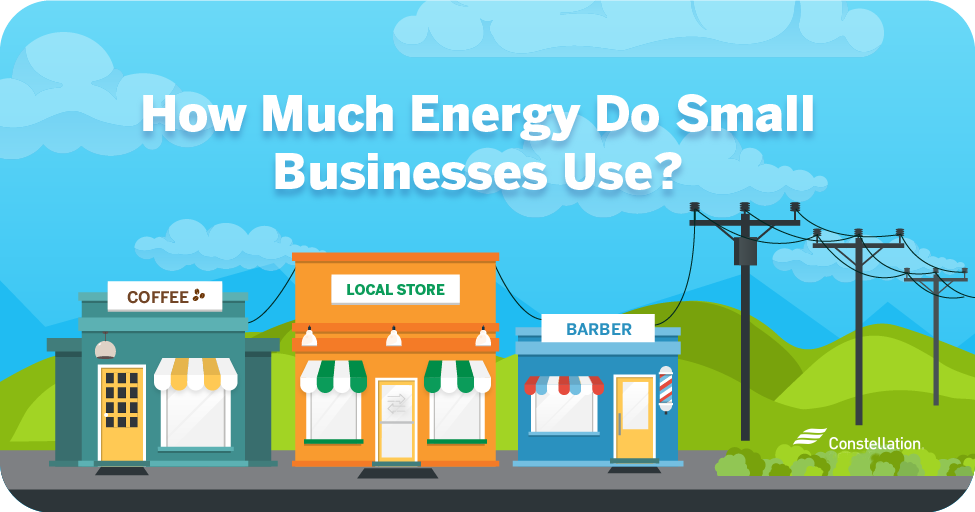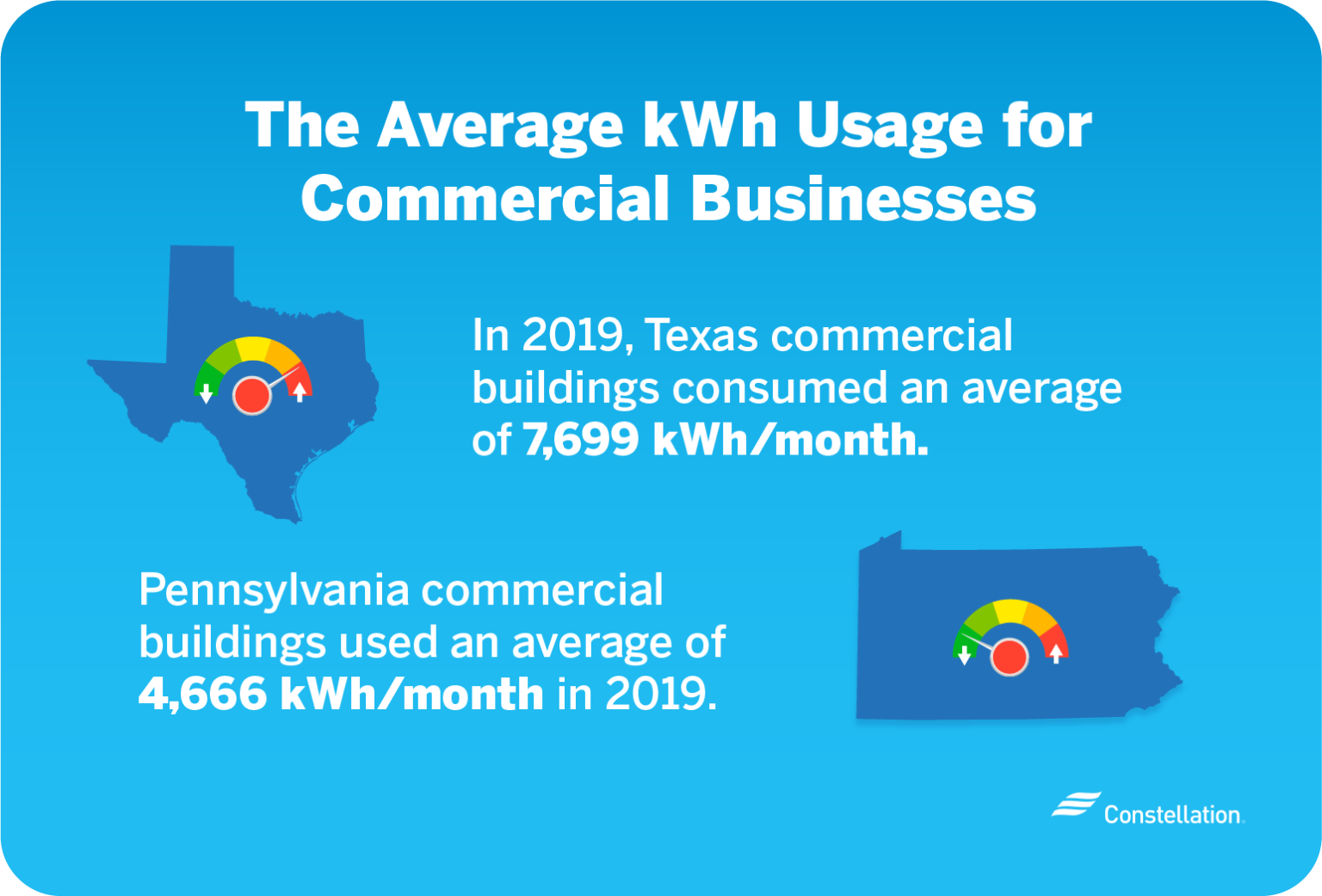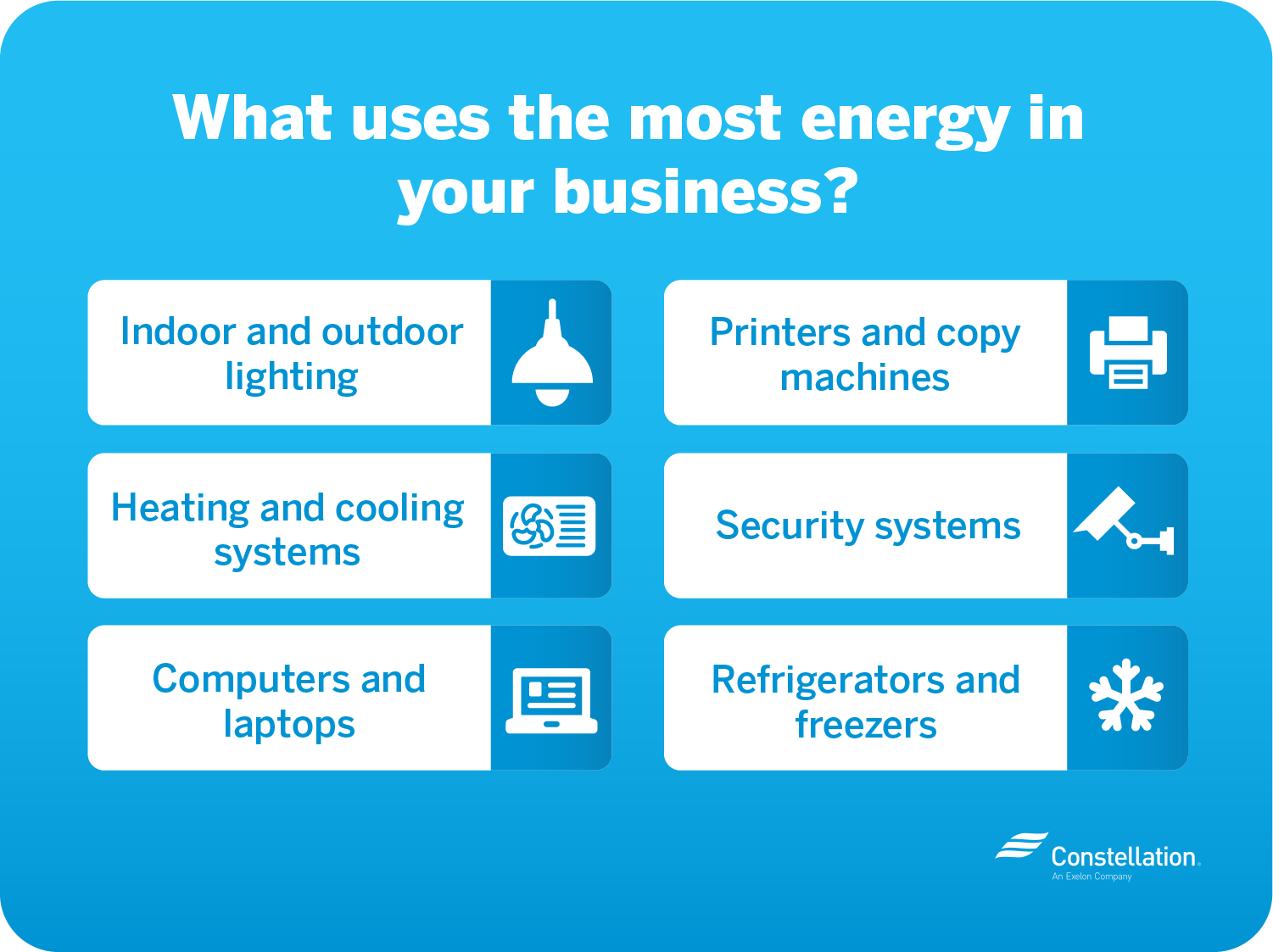
- Category:
Small Business Energy Savings -
Last updated:
February 22, 2022
How Much Energy Do Small Businesses Use?
Small-business owners are busy people. Between managing employees, serving customers and tracking finances, it can be difficult to keep track of your small business’s energy consumption. But by understanding how much energy your small business uses, you can find ways to cut back, be more efficient and protect your bottom line.
Determining kWh usage for small businesses
In 2019, the average monthly energy consumption for commercial properties in the United States was 6,066 kilowatt-hours (kWh). That includes a range of business sizes, so the average kWh usage for small businesses will be less, but the average for your business will vary based on a number of factors, such as the industry you’re in, the climate in which you’re located and the type of equipment you use. For example, if your business stays open late and experiences more extreme temperatures, you can expect to spend a little extra on your lighting, heating and cooling costs.
In Texas, in 2019, commercial buildings consumed an average of 7,699 kWh/month. Compare that to Pennsylvania, at 4,666 kWh/month. So, location plays a role in your usage. But regardless of your state, it’s worthwhile to find ways to curb your small business’s energy consumption.
To keep your energy use at a minimum, try upgrading to energy-efficient office equipment and implementing energy-saving practices for your employees. Just getting your employees to turn off lights when not in use, or unplug computers when they leave for the day, can lead to increased energy savings over time.

How much is the average electric bill for a commercial business?
In 2019, the average monthly bill for commercial properties in the United States was $647.61. Because of the range of business sizes, many small businesses will pay less than that figure. And just like with usage, the average electric bill for small businesses is higher in some states than in others.
For example, commercial properties in Texas spent an average of $620 per month on electricity in 2019, while similar properties in Illinois spent about $600 per month during the same period. In a state like Pennsylvania, the average monthly cost of electricity for a commercial business was only $407 per month in 2019.
If you’re unsatisfied with the amount your small business is paying for electricity each month, it may be time to explore your options. When choosing a new energy provider, it’s important to shop around and compare rates until you find one that meets your particular business’s needs.
Calculating your business’s electricity costs
Calculating your small business’s electricity costs will give you a better idea of what’s consuming the most power in your business and help you outline steps to limit how much you use. An energy management system can be a great tool for monitoring your business’s electricity usage and figuring out your overall costs.
If you don’t have an energy management system, you can calculate the cost to run each appliance in your business instead. This can be accomplished by using the following formula:
- Multiply a device’s wattage by the number of hours it’s used each day.
- Divide by 1,000.
- Multiply by your kilowatt-hour (kWh) rate.
So, say you have a laptop that uses 50 watts while plugged in. You use it 8 hours a day and pay 11 cents per kilowatt-hour for electricity. You’re using 400 watt-hours every day (50 watts x 8 hours = 400 watt-hours). Divide that by 1,000 to get 0.4 kWh. Multiply 0.4 by your electricity rate of 11 cents, and you get 4.4 cents per day, or $0.044. If your business operates about 23 days in a month, you’ll pay a little over a dollar per month to power that one laptop ($0.044 x 23 days = $1.01).
What uses the most energy in your business?
From your business’s location to the industry you operate in, there are several factors that influence small-business energy consumption. For example, what uses the most energy in an office may not use as much energy in a restaurant, and vice versa. But in general, some of the biggest energy expenses for small businesses include the following “end uses.”

Indoor and outdoor lighting
Lighting is one of the largest energy expenses for commercial businesses, consuming an average of 7 kWh/square foot. Factors such as the types of light bulbs you use and your business hours will affect how much you spend on electricity for lighting each month.
Investing in energy-efficient commercial lighting is an effective way to curb the amount of energy your lights use. Additionally, you may also be able to limit your electricity expenses by changing your business hours. The less often your lights are turned on, the more energy you’ll be able to conserve.
Heating and cooling systems
Regulating the temperature in your small business can require quite a bit of energy. Although the actual amount will vary depending on the size of your business and the climate in your area, heating and cooling consumes an average 5 kWh/square foot in commercial businesses — 7 kWh/square foot if you include ventilation.
In office buildings, heating and cooling can account for more than 40% of total energy consumption. This is especially true for offices based in colder climates. In Wyoming, for example, 44% of energy consumed in offices goes toward heating and cooling.
Computers and laptops
Computers, laptops and accessories are also capable of drawing a lot of energy in your business. When compared, laptops are definitely the more energy-efficient option, consuming approximately 120 kilowatt-hours less than desktops per year.
However, one common energy-wasting habit is leaving laptops plugged in after they’ve reached a full charge. Using our example above, a laptop that uses 50 watts while plugged in for 24 hours at 11 cents per kWh, even on nonbusiness days (say, 30 days), nearly quadruples how much you spend per month to power that one machine, at $3.96/month. To reduce your small-business energy consumption, it’s best to unplug laptops and work off the battery whenever possible.
Printers and copy machines
Depending on your industry, you may rely on printers, copy machines and other office equipment to operate your business. A commercial printer consumes an average of 300 to 500 watts when printing, and about 30 to 50 watts in standby mode. If you use a 400-watt commercial printer continuously for 8 hours a day at $0.10 per kilowatt-hour over 250 business days, it will cost you approximately $80 a year to run. In light of these expenses, you may want to consider going paperless in your small business.
Security systems
Although most security cameras are only 2 to 15 watts, they’re often running 24/7, meaning they can use a sizable amount of energy over time. Plus, the wattage goes up if your system features a security light, network video recorder (NVR) or other energy-drawing features. For example, a network video recorder could add an additional 40 watts to your system draw.
At $0.10 per kilowatt-hour, a single 15-watt security camera running 24 hours a day will consume around $13 worth of energy a year. Add a 40-watt NVR, and that figure increases to just under $50. However, this small-business energy cost could be well worth the added protection you receive.
Refrigerators and freezers
Businesses in some industries, such as food service, depend on refrigerators, freezers and other equipment to keep their operations running. These types of appliances can consume a substantial amount of energy. For example, a single commercial refrigerator can cost around $140 a year to run.
One business energy-saving tip is to exchange outdated appliances for more energy-efficient models. For example, switching to an ENERGY STAR ® commercial refrigerator can save you as much as $788 in energy expenses over the lifetime of the appliance.
Taking control of your small business’s energy consumption
It’s worth taking some time to calculate your small business’s energy costs and figure out how much you’re using and why. Then, you’ll be able to analyze your business energy data and start making changes to cut your energy expenses. Even a few small adjustments to the way your business operates can result in significant savings down the road.




